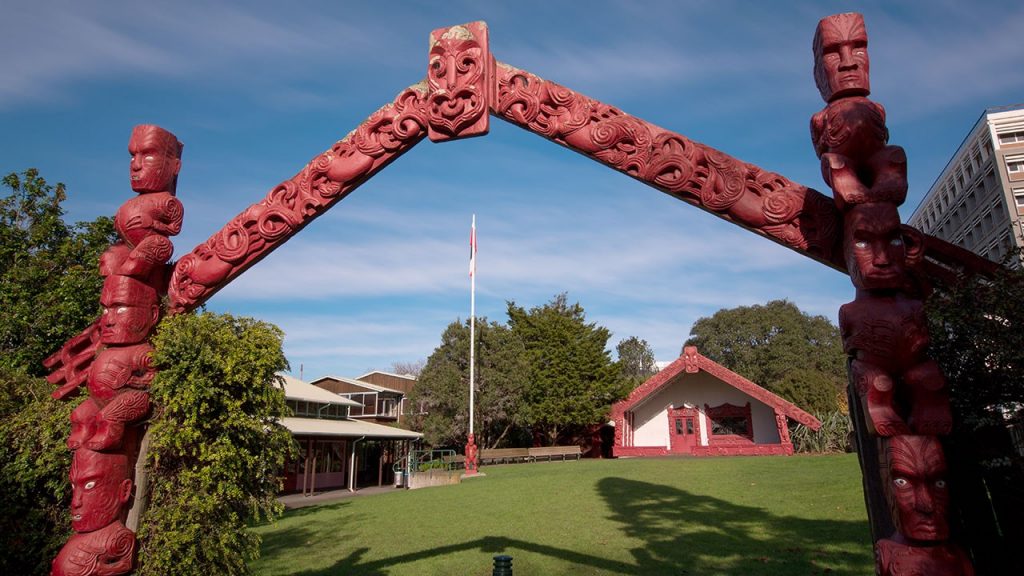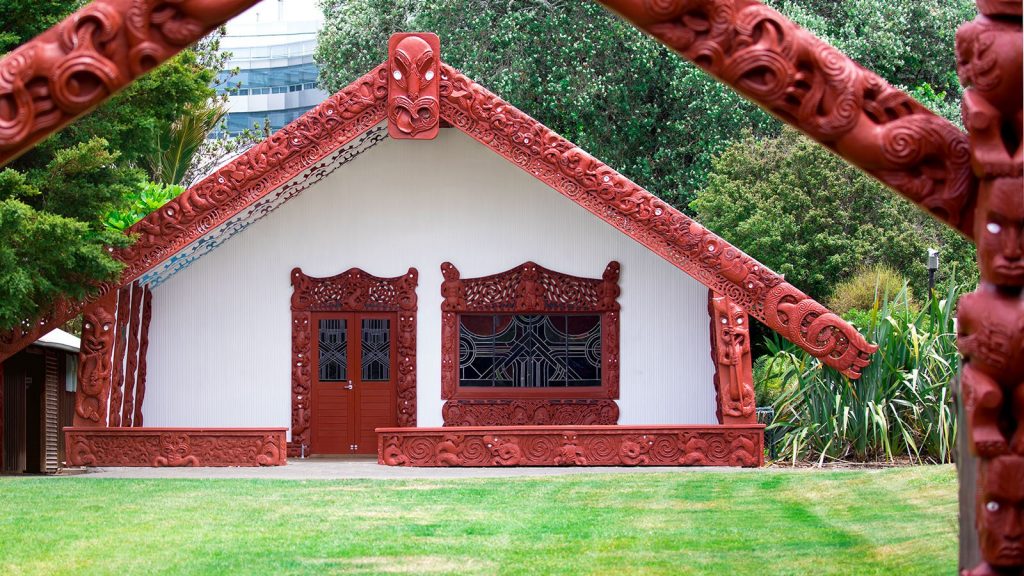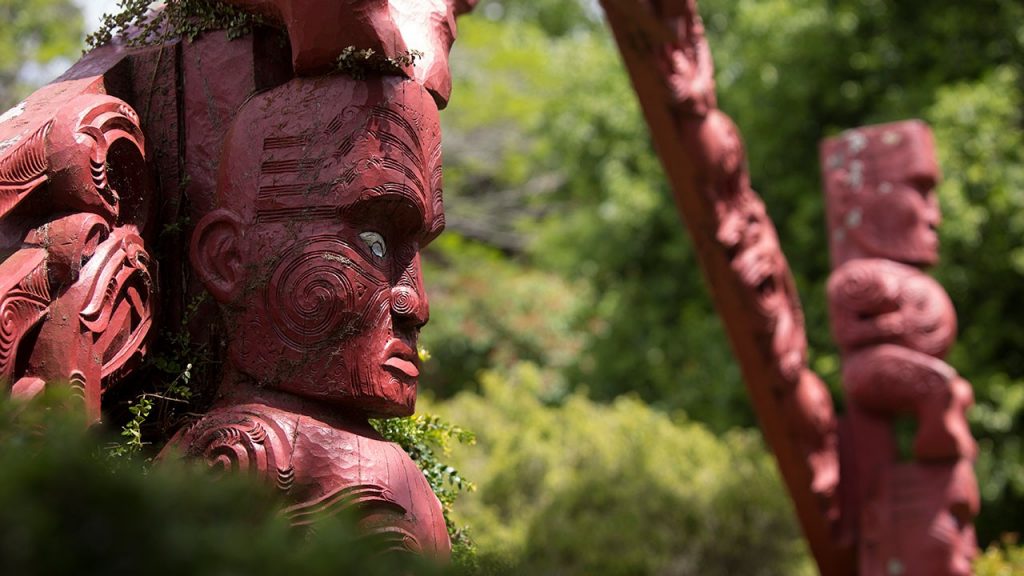
Pōwhiri at the Waipapa Marae
Tuesday 2 April, 5.00

The Waipapa Marae
The Waipapa Marae is the focal point of Māori life at our University for the benefit and support of our entire University community where visitors can be formally welcomed onto our campus.
Our whare whakairo – Tāne-nui-ā-rangi – represents all major tribes, unlike many meeting houses on tribal marae.
The symbolic conception of Tāne-nui-ā-rangi, the meeting-house on Waipapa Marae, was formulated by the tohunga whakairo Pākariki Harrison. The primary ancestors of the house are the ancestor-gods with whom students of all tribes can identify. Around the walls are the captains and priest-navigators of the canoes that brought the ancestors of the different tribes to New Zealand in the 14th century. Also included in the house is Tangi’ia, an ancestor who connects the major islands of the Pacific with New Zealand. Thus, the house is pan-Pacific as well as pan-tribal.


The Marae on which Tāne-nui-ā-rangi stands is named after Waipapa, the landing place of canoes on what is now Beach Road opposite the old railway station. The name acknowledges Ngāti Whātua ki Orākei as the tangata whenua of Waitematā. Logs of tōtara and kauri were donated by Ngāti Hine for the carving of the house. They were formally visited by a deputation from the University to thank them for their gift.
Māori Studies students and staff use the Marae for language classes and seminars. The Marae is also used by other parts of the University and by various community groups. The marae is often booked months ahead for ceremonial welcomes for international conferences. On formal occasions, Māori Studies staff and students are the tangata whenua of the marae. On important ceremonial occasions Ngāti Whātua kaumātua also take a leading role on the taumata.
The Marae is a taonga and like all taonga deserves respectful behaviour, including practical care and upkeep of its grounds.

Contact Us
Conference@tikatangata.org.nz





